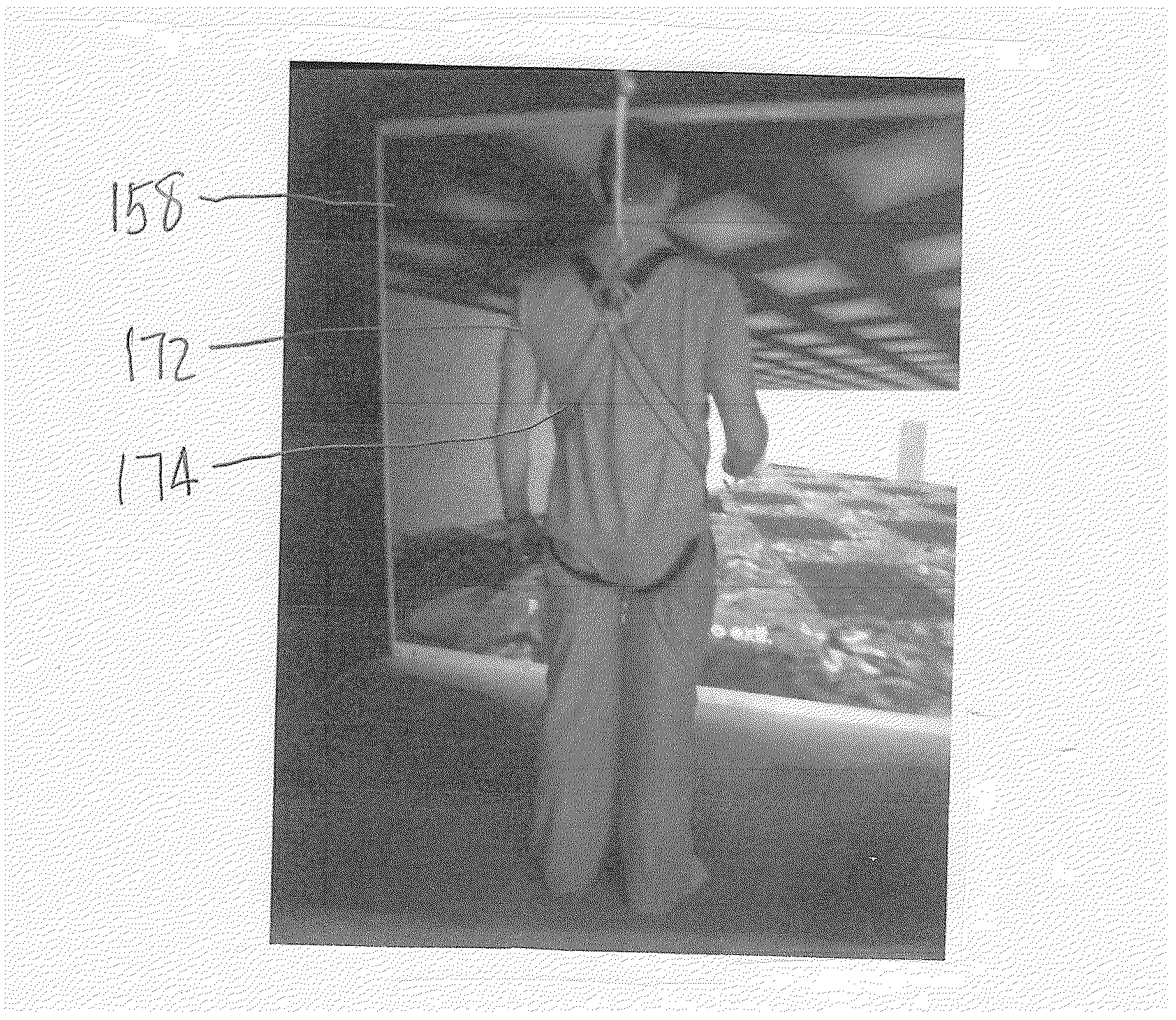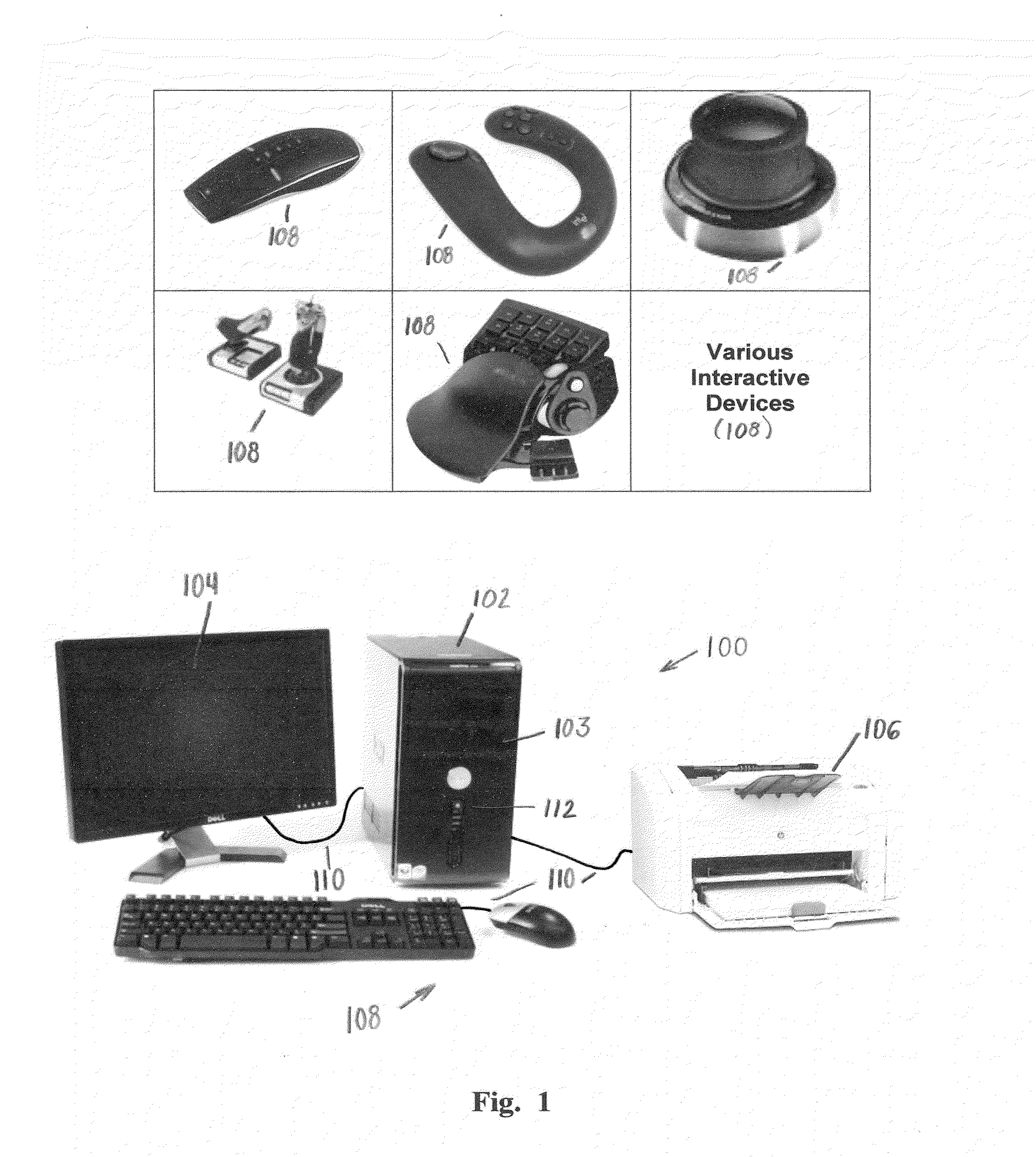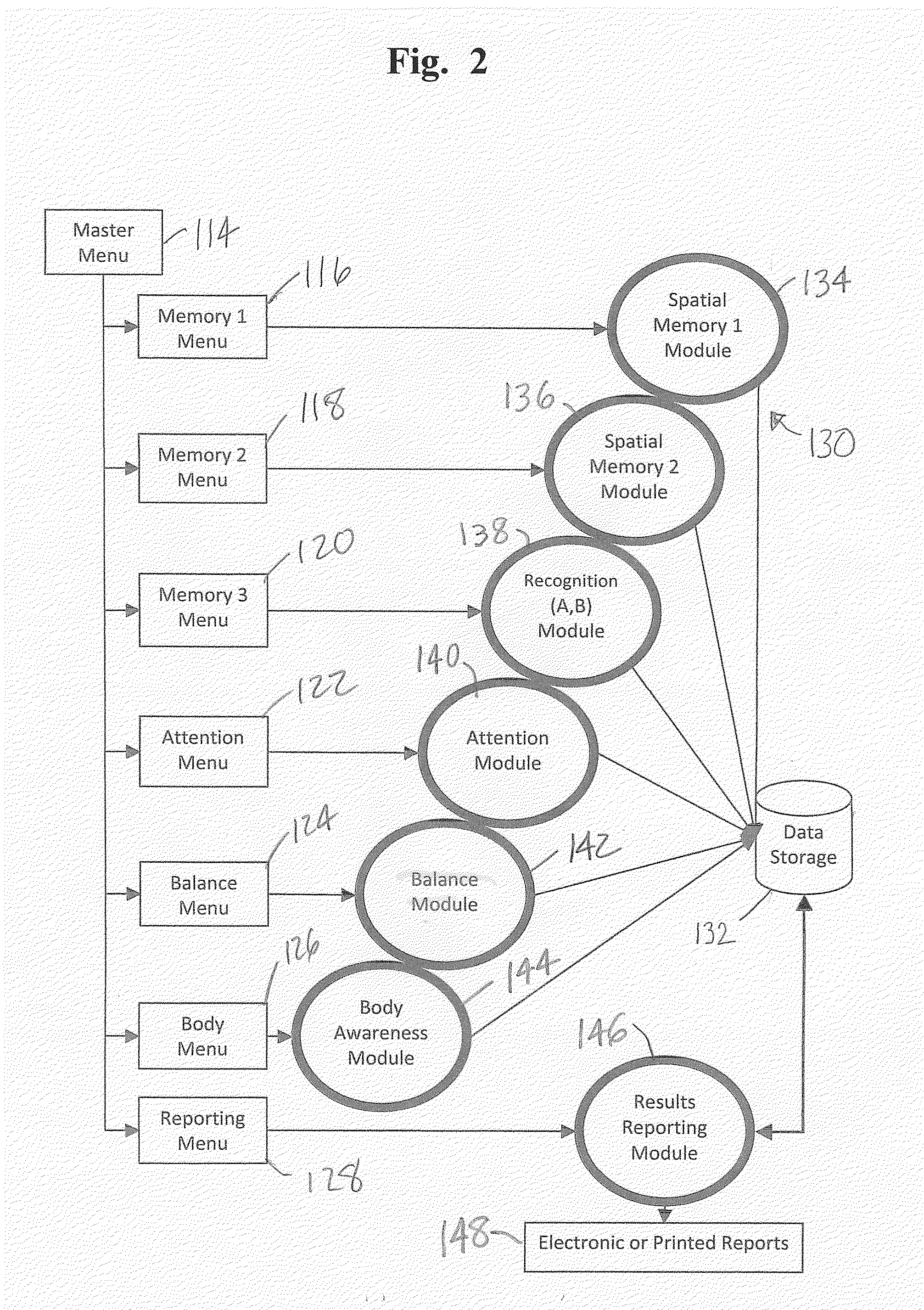Assessment and Rehabilitation of Cognitive and Motor Functions Using Virtual Reality
a virtual reality and cognitive technology, applied in the field of traumatic brain injuries, can solve the problems of varying degrees of success of prior techniques and procedures, inability to identify and track rehabilitation progress, and inability to meet the “golden standard” of neurocognitive assessment and rehabilitation, etc., to achieve the effect of easy identification and tracking rehabilitation progress
- Summary
- Abstract
- Description
- Claims
- Application Information
AI Technical Summary
Benefits of technology
Problems solved by technology
Method used
Image
Examples
Embodiment Construction
[0077]The following is a detailed description and explanation of the preferred embodiments of the invention and best modes for practicing the invention.
[0078]As shown in FIG. 1 of the drawings, a traumatic brain injury (TBI) diagnostic (assessment) and rehabilitative process and system 100 can have a central processing unit (CPU) 102 including a hard drive 103 which provides data storage. The CPU can have various related equipment and components including a screen 104, printer 106, and one or more interactive communications devices 108. The CPU can be hard wired by a bundle of wires or cable 110 and / or or in wireless communication, such as by Bluetooth, via an antenna 112 with one or more related equipment and components, e.g. the screen, printer, and interactive communications device. If desired, the screen can be separate from and / or operatively associated with the CPU.
[0079]The master menu flowchart of FIG. 2 has a master menu 114 which can comprise a Memory 1 menu 116, a Memory ...
PUM
 Login to View More
Login to View More Abstract
Description
Claims
Application Information
 Login to View More
Login to View More - R&D
- Intellectual Property
- Life Sciences
- Materials
- Tech Scout
- Unparalleled Data Quality
- Higher Quality Content
- 60% Fewer Hallucinations
Browse by: Latest US Patents, China's latest patents, Technical Efficacy Thesaurus, Application Domain, Technology Topic, Popular Technical Reports.
© 2025 PatSnap. All rights reserved.Legal|Privacy policy|Modern Slavery Act Transparency Statement|Sitemap|About US| Contact US: help@patsnap.com



